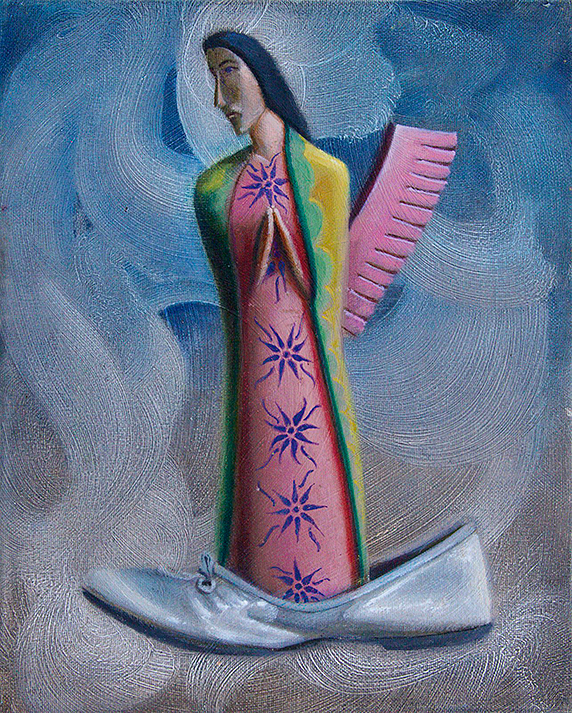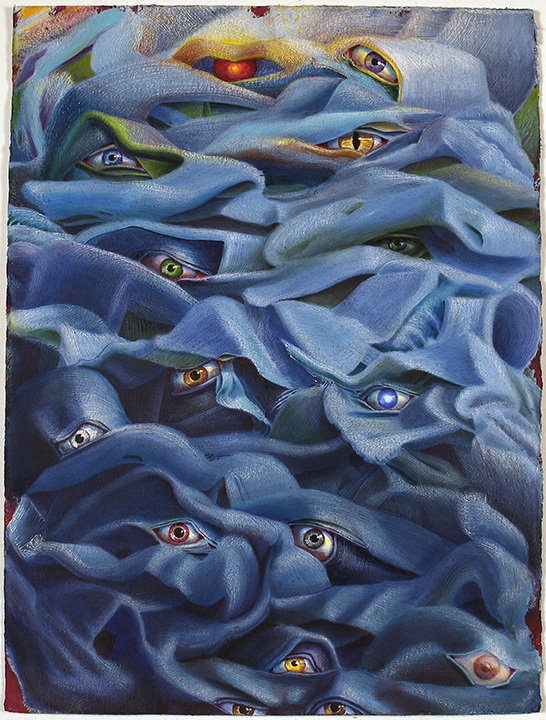The Singular Double Visionary Art of Christopher Moses
By: Tom Patterson
The paintings
of Christopher Moses embody a longstanding and ongoing investigation into the relationship between the visual and the actual--between that which the eyes see and that which constitutes reality. Moses’ path as a visual artist and the overall thematic thrust of his work may have less to do with the artistic precedents in his own family (his father worked as a commercial artist, and both parents were hobbyist painters) than with the special nature of his visual experience of the world from the time he was born. Despite childhood surgery and other medically prescribed procedures aimed at correcting the problem, Moses’ eyes have persisted in showing him a doubled version of whatever is in front of them when they’re open--the “seeing double” that those with “normal” vision can experience voluntarily by crossing our eyes or consuming far too much alcohol. One result of Moses’ inherent, evidently uncorrectable double vision is his lack of trust that what he sees corresponds to reality.
Although he professes to approach his art spontaneously and intuitively, without a preconceived plan as to what he wants a new painting to look like, many if not all of the images he has created in recent years manifest or allude to this fundamental questioning of the visual/actual relationship noted above--a good indication of the extent to which this fundamental and ultimately philosophical question has permeated his psyche.
Moses generally chooses to work with a limited vocabulary of images, and as basic and “simple” as they are, they’re also richly metaphorical. There are, for example, the houses that appear in many of his works, often as the dominant image or images. In discussing the repeated and frequent variations he has painted on this image, he points out the near-universal penchant among young children for drawing landscapes consisting of a horizon line grounding a simple triangle-atop-square house under a radiant circle sun.
Moses’ houses are typically anthropomorphic--each suggestive, in frontal view, of a face with two eyelike windows and an arched-front-door mouth, and he often employs rubbery distortions that lend them animated qualities. Such strategies and techniques in his work have their origin in animated cartoons that he first encountered in childhood, in which architecture, household tools and utensils, and off-the-shelf products take on human characteristics, often dancing and singing their way across the screen. (Growing up in Los Angeles, he was convenient to Disneyland, which he first visited as a child during the week it opened to the public in 1955--an experience that no doubt made the cartoon universe of Walt Disney et al all the more palpable to Moses at the time.) Moses allows that his house images are also influenced by his experiences of walking through residential neighborhoods during his college years, under a full moon and the influence of psychedelic compounds, when, to him, each house he saw appeared to manifest a distinct personality.
More: Page Two

PRAYING
Oil On Canvas - 11 x 18
Reality Check - Fantasy Realitites

PRAYING
Oil On Canvas - 30 x 22
The Eyes Have It - Blood Behind the Blues
